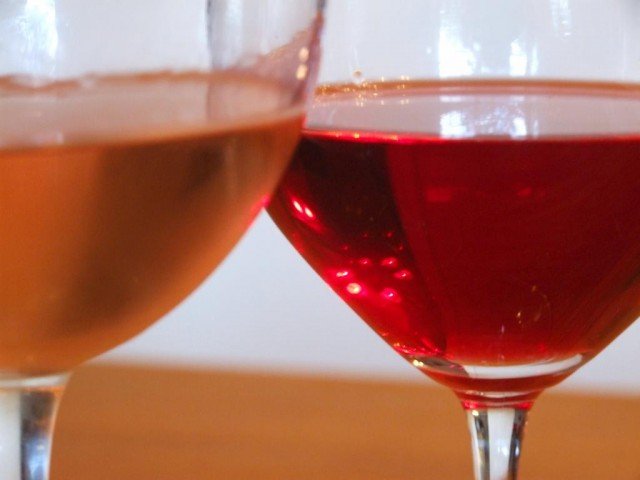The first time I encountered clairet was on a bicycle tour through Bordeaux in France. At one vineyard we visited they talked about it briefly when they told us how they made their rosé. To begin with I thought they were just mispronouncing claret, but there is a connection. Centuries ago clairet, known as rouge clair (clear red) was exported throughout Europe and became very popular especially in Britain. However the word became Anglicized to claret, which then somehow later came to mean only red wines from Bordeaux instead. Just to confuse things a little further, there is a white grape called Clairette blanche which is used to make Clairette de Die AOC a sparkling white wine from the Rhône Valley, but there is not connection between this grape and clairet which can made from Malbec, Cabernet franc, Carmenère, Merlot rouge, Cabernet Sauvignon or Petit Verdot grapes
Clairet is not rosé, but it isn’t red wine either. It is a very different creature with its own Appellation d’origine contrôlée, AOC Bordeaux Clairet, but it isn’t that well know outside of Bordeaux, let alone the rest of the world, as very little of the vineyards in Bordeaux are given over to its production. The demand for more complex reds and the competition with rosé wines have also seen its decline. However if you look in some larger wine merchants you may find a bottle tucked away in the Bordeaux or rosé section.
Clairet is an odd sort of wine, in that it sits between red wine and rosé and is nether one or the other. It can be drunk chilled like a white wine, or at room temperature like a red when it becomes smoother and has more mouth feel. It’s position between red and rosé can also be explained by its production. During maceration, i.e. the time the juice spends sitting on the grapes, rosé is only in contact with the red grape skins for a few hours, clairet is allowed to sit for a few days and red wine can sit on the grapes for a couple of weeks. Because of the long maceration time, this give clairet a darker colour and more complex flavour than rosé, but it is still a light flavoured wine compared to a red.
My first taste of clairet was on the same bicycling holiday later in the week at another vineyard, Château de la Rivière in the Fronsac region of Bordeaux. It was a 2006 Prince de la Rivière Bordeaux Clairet. I was intrigued by the lovely dark pink coloured compared to any rosé that I had ever seen. It tasted less acidic and smoother than a rosé with lots of red currant and cherry aromas. Since then I keep a look out for the odd bottle of clairet, and also at our wedding reception we made sure there was a case of clairet for guests to try.
A few nights ago I opened a 2011 Château de Campuget Rosé to go with our Le Grand Aïoli. It should have Provence Rosé, but Nimes is close enough. I also opened a 2010 Château Penin Clairet made with 100% Merlot to compare it against the Rosé. As you can see from the photograph above, the clairet, on the right, is a much darker pink, nearly red. It was also our favourite wine of the two. It had plenty of red fruit aromas, a bit like summer pudding. Though it was sweeter and far smoother than the rosé, it still had a slight grapefruity edge.
I hope clairet doesn’t disappear altogether, because in my opinion it is a far superior tasting wine than rosé.



